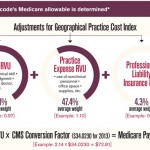
With approximately 250,000 members, the American Medical Association (AMA) is the largest association of physicians in the United States. Among medical societies, its voice is the loudest, its visibility the greatest, and its influence over medical issues with federal regulatory agencies like the Centers for Medicare and Medicaid Services (CMS), legislative policy actions, and media coverage is the strongest. The ACR maintains a voting seat in the AMA’s House of Delegates so it can participate in AMA actions across a wide spectrum of clinical, administrative, and policy-making areas. In addition, holding a seat in the House of Delegates is the prerequisite for the ACR to participate in many of the highly influential reimbursement committees of the AMA, such as the Current Procedural Terminology (CPT) Editorial Panel and the Relative Value Update Committee (RUC).
Unfortunately, the ACR is in jeopardy of losing its seat at the table.
The ACR Needs Your Support
Every five years, the ACR must verify that 1,000 of its members also belong to the AMA in order to maintain its seat in the House of Delegates. The ACR is up for review this year and we are short by 300 members.
Although a single House of Delegates’ seat in an organization the size of the AMA might seem inconsequential, AMA membership allows active participation at all levels in the many debates which determine the direction of the AMA. I have been a member of the AMA since I first entered practice in 1977, and, like many of you I suspect, there are times when I have agreed with the AMA’s actions and initiatives and times I have not. Regardless of what we might think of AMA’s stand on specific issues, the fact remains that only by being at the table, both as individual members and by retaining ACR’s seat in the House of Delegates, can we influence its direction.
ACR members Mel Britton, MD, and Gary Bryant, MD, currently serve as the ACR’s representatives to the AMA House of Delegates. ACR member Roy Altman, MD, served as the ACR’s delegate for 16 years and helped rheumatology have a voice. Drs. Britton and Bryant are instrumental in not only reporting back to the ACR about the issues being addressed by the AMA, but also in monitoring reports and resolutions that could affect rheumatologists and being the voice for rheumatology.
The AMA does many important things, such as managing CPT/RUC coding, advocating for a favorable Medicare fee schedule, engaging in medical liability reform, and working on insurance issues. These things affect all physicians regardless of specialty or state. The United States needs to have a national group that will represent all physicians. Physicians need to stand up, stand together, and speak with one voice. There are a lot of groups that are trying to separate physicians. As physicians we need a group that speaks for all of us. The AMA fulfills this role and has fulfilled this role for more than 160 years.
The ACR: Working within the System
The CPT Editorial Panel and the RUC are responsible for defining all CPT codes and providing annual Medicare reimbursement recommendations to CMS. CMS accepts more than 95% of the RUC recommendations each year, proving the importance of continuing participation by the ACR. Working with the AMA during the past five years, the ACR has been instrumental in creating new CPT codes and establishing new valuations.
- Last month, the ACR submitted information to the Practice Expense Resource Committee regarding dual energy X-ray absorptiometry studies. The ACR is hoping to increase reimbursement for technician time when performing dual X-ray absorptiometry studies and for the cost of the equipment.
- E&M codes were brought before the RUC during the CMS five-year review. The ACR, along with other specialties, requested that the relative value units of E&M codes be increased to appropriately reflect the amount of work required in diagnosing patients. Because of the work done by ACR and other specialties, E&M codes received a substantial increase January 1.
- Appropriate infusion codes were developed and valued through the AMA coding process. The ACR is part of the Drug Infusion Workgroup that discusses potential changes to infusion codes.
- The ACR monitored changes to trigger-point injection codes to ensure that rheumatologists’ interests were reported to the CPT panel.
These are just a few examples of the necessary work that is accomplished through the AMA CPT and RUC process. The ACR is able to work on CPT and RUC issues thanks in large part to ACR members Robert Lloyd, MD, Ron Kaufman, MD, and Eileen Moynihan, MD. These physicians are the ACR’s CPT and RUC advisors and attend three meetings a year to work on behalf of rheumatologists throughout the nation.


